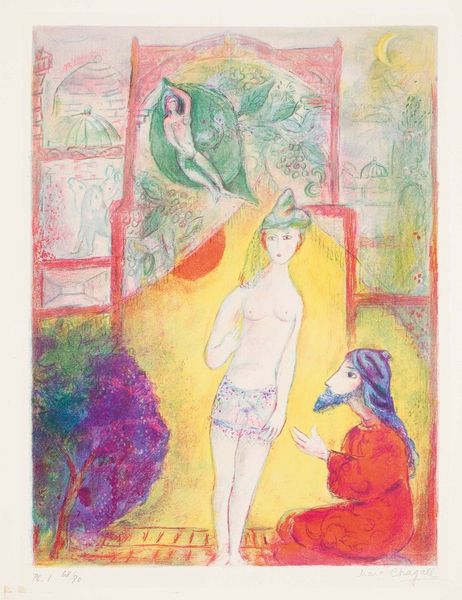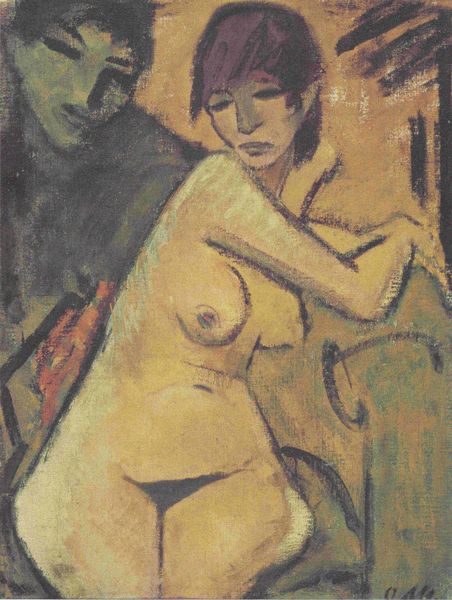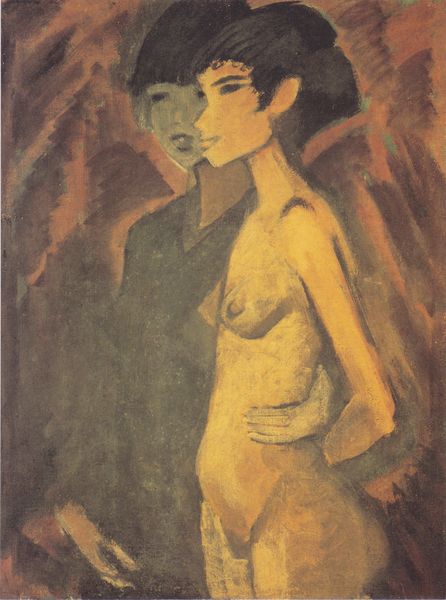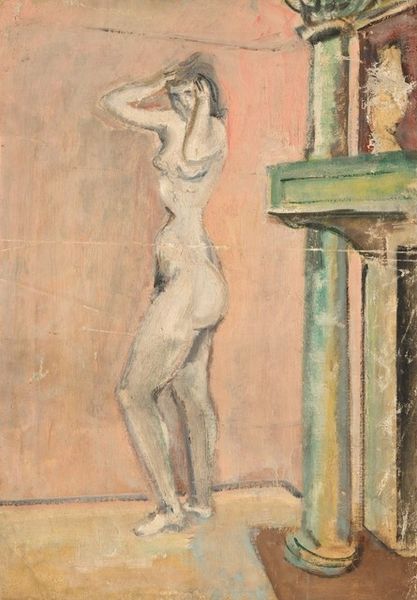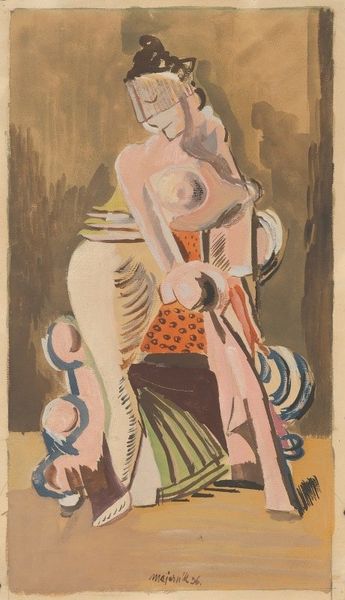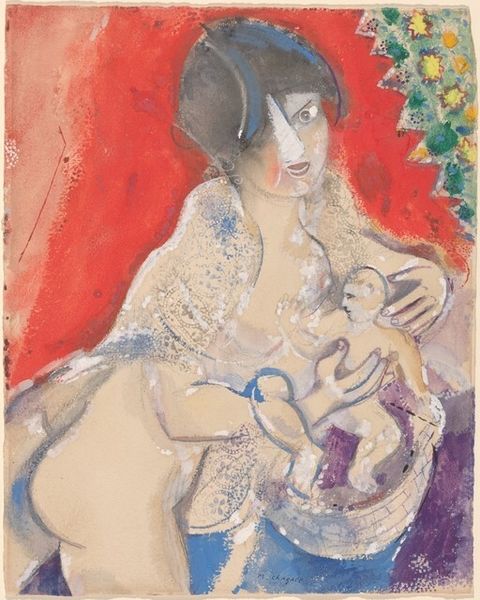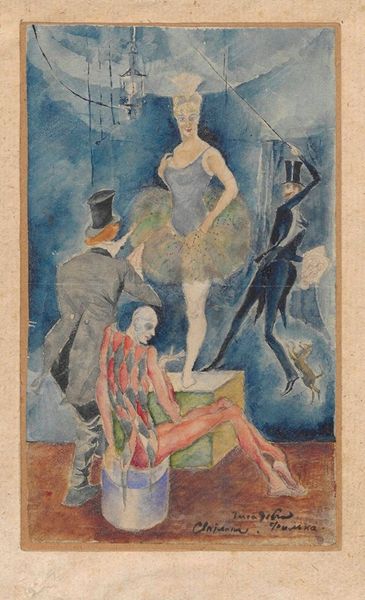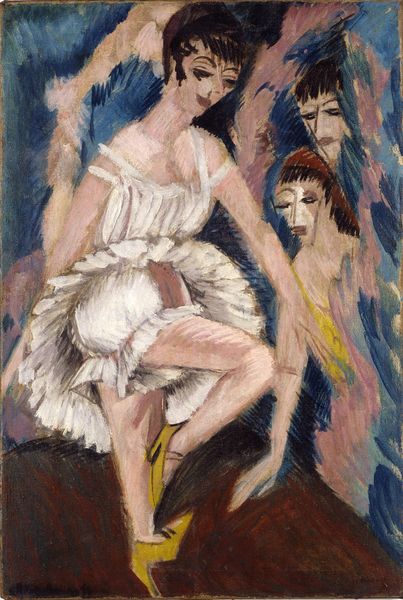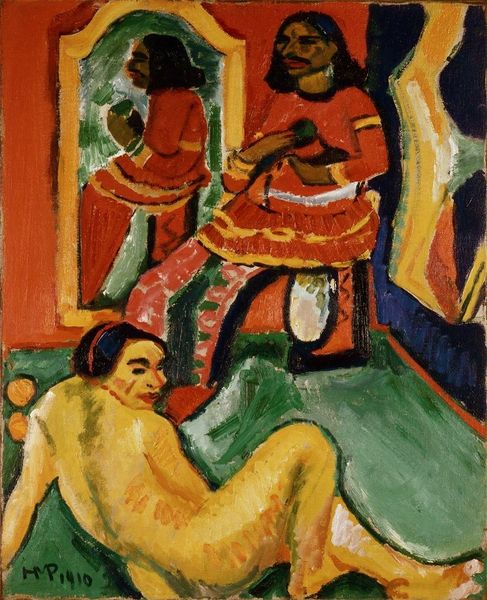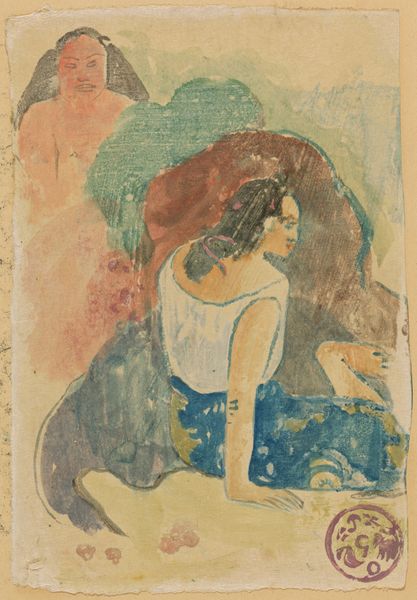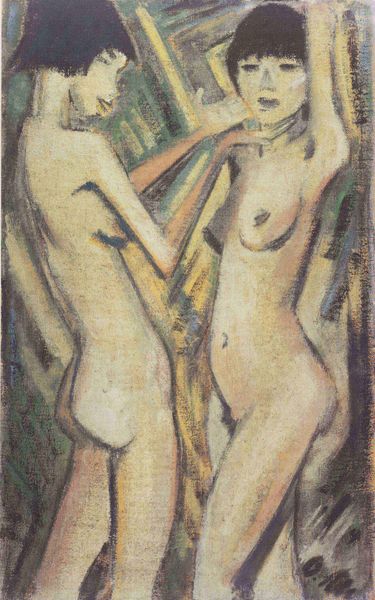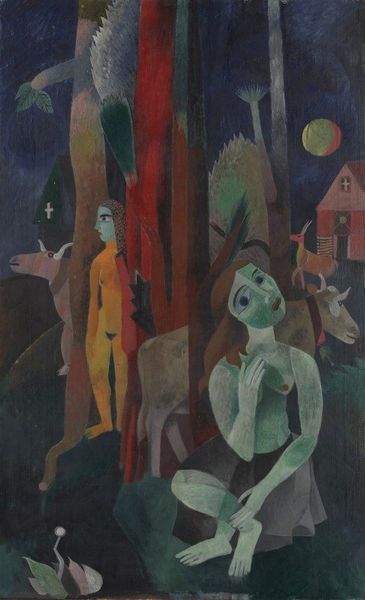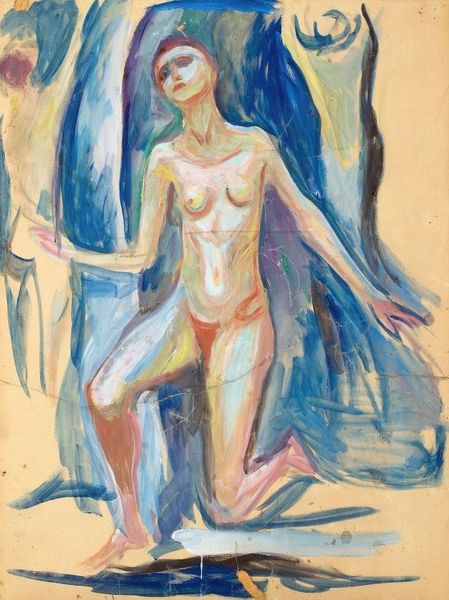
drawing, coloured-pencil, painting, pencil
#
portrait
#
drawing
#
coloured-pencil
#
painting
#
figuration
#
intimism
#
coloured pencil
#
group-portraits
#
pencil
Copyright: Public Domain: Artvee
Curator: Zygmunt Waliszewski's work, "In the Artist's Workroom," crafted around 1917 with colored pencils, strikes me as… fragmented, somehow. Editor: Fragmented, yes, but perhaps deliberately so. The composition—the arrangement of figures, the visible drawing surfaces—creates a kind of layered reality, doesn’t it? It speaks to the subjective nature of perception, how we filter and reconstruct our understanding. Curator: I see figures of various aesthetic persuasions here. Is it the artist, friends, perhaps some models posed with deliberate visual markers like period attire or stage costumery? Their styles strike me as visual totems almost, cultural types he's playing with. Editor: Indeed. Observe how Waliszewski plays with line and volume; there is a distinct lack of traditional shading and the figures appear almost flattened against the backdrop. Notice the light—where it falls, what it illuminates, the intentional ambiguity. Curator: I'm interested in the implied narrative or moment captured, the power dynamics, what it conveys about this time in the artist's life. The seated nude, so frankly posed, seems to exude both vulnerability and agency, embodying feminine archetypes throughout time, while seemingly unfazed by scrutiny of being looked at. Editor: It’s worth pausing over the subtle tensions at work here. Consider, also, how the colors affect the overall atmosphere. The subdued palette creates an air of introspection and detachment. This limits expressive content of raw emotional display to suggest a deeper feeling—that could touch on history, class, sexuality. Curator: All while drawing on a visual language from various sources... a bit jarring to a modern eye! I see references to neoclassical and medieval art, the kind of blending which makes the piece still feel current and relatable. Waliszewski appears to capture an essence of art itself as a hall of mirrors, reflecting both ourselves and the creative process back at the viewer. Editor: I find your symbolic associations truly intriguing. Ultimately, it prompts me to see the artist intentionally disassembling conventional portraiture norms. It feels so… purposeful, like the artwork resists simple categorization, creating an interplay that questions our relationship to observation. Curator: Absolutely, this has broadened my perspective on visual symbols within art as a dialogue. Editor: And the artifice, and seeing has refined how I approach formal analysis. Thank you.
Comments
No comments
Be the first to comment and join the conversation on the ultimate creative platform.
